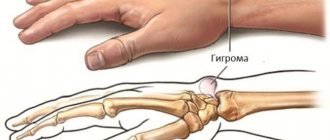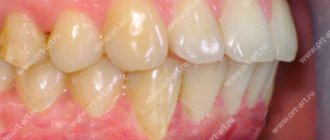From this article you will learn:
- Is it possible for pregnant women to have anesthesia?
- safe analgesics and antibiotics for pregnant and lactating women,
- How do medications affect the fetus?
Antibiotics and analgesics for pregnant women are a fairly short list of medicines that fall into safety categories “B” and “C”. According to FDA recommendations, all drugs are now classified into 5 categories (including those mentioned above), and this classification is usually followed by doctors in all countries. The inclusion of a particular drug in a certain group is based on a large volume of reputable clinical studies, and you will see a list of approved drugs below.
In addition to drugs to reduce pain and inflammation, various medical interventions (for example, dental treatment) are clearly regulated for pregnant women. At this link you can find out which periods during the 3 trimesters are more favorable for dental interventions, and during which periods dental treatment is possible only for urgent reasons. But you need to understand that a pregnant woman’s fundamental refusal to take medications and treatment when necessary can cause more harm to the unborn child than the medications themselves.
For example, pain and the stress associated with it can even lead to spontaneous abortion in the very early stages, and therefore painkillers for pregnant women can actually be a good choice in some situations. In addition, a woman's refusal to take treatment and antibiotics can sometimes be a very bad decision. For example, with the development of inflammation, the production of inflammatory cytokines, prostaglandins (PGE-2), as well as interleukins (IL-6, IL-8) is triggered in the inflammatory focus. Moreover, each of them has a very negative effect on pregnancy.
Impact of inflammatory markers on pregnancy –
Clinical studies have revealed that with the development of periodontitis in pregnant women, increased levels of all of the above inflammatory markers are found not just in the blood of a pregnant woman, but even in the amniotic fluid in which the fetus is located. Bala revealed a clear correlation between the presence of inflammatory diseases during pregnancy and premature birth, the latter being more associated with the following two factors.
Firstly, it is the release of PGE-2, which limits placental blood flow, causing gradual necrosis of the placenta and, as a result, restriction of intrauterine growth and premature birth. Secondly, with the production of cytokines, which promote contraction of the uterus and also lead to dilation of the cervical canal. And the data presented are only a small part of the processes in the body of a pregnant woman mediated by the development of inflammatory reactions.
Medicines and pregnancy –
The use of medications by pregnant women has 2 main problems:
- firstly, you need to avoid harming the unborn child,
- secondly, during pregnancy there are critical periods when taking medications should be limited as much as possible,
- thirdly, there are periods of pregnancy when increased dosages of drugs may be needed to achieve an effect (due to the metabolic characteristics of a pregnant woman), which can negatively affect the fetus.
The most dangerous period for medical interventions and medications is the 1st trimester of pregnancy. It lasts from the moment of conception until the 14th week, but during this trimester there are 2 particularly dangerous periods. The most dangerous period is the time from the moment of fertilization until the implantation of the fertilized egg (approximately the 17th day). At this time, the fetus is especially sensitive to medications, toxins, and stress experienced by a pregnant woman. Stress and pain during this period give a high probability of spontaneous abortion.
Already on the 18th day, the formation of organs and tissues begins in the embryo. Clinical signs of this period are heartburn, nausea and vomiting, increased salivation, increased gag reflex, and periodic fainting. During this period, it is also undesirable to carry out any medical procedures (except emergency ones), and during this period it is also impossible to use drugs that have even minimal teratogenic effects. This period ends at week 8 inclusive.
Impaired fetal development can be caused by taking medications, which occurs precisely during critical periods of organogenesis (this is the 1st trimester of pregnancy, especially up to the 8th week inclusive). Taking the same drugs at a later date may no longer cause serious problems, but may affect the function of these organs.
Today, approximately 30 drugs with proven teratogenic activity in humans are known, and most of them are no longer used today. Many common medications, such as aspirin, glucocorticoids, and diazepam, were previously thought to be teratogenic, but extensive research has proven the safety of these drugs.
The teratogenic effect is usually understood as a violation of embryonic development (the occurrence of anomalies and malformations) as a result of exposure to teratogenic factors. Teratogenic factors, in addition to taking a number of medications, also include some physical and biological factors, for example, viruses.
The importance of a doctor's prescription (prescription form) - if the doctor sees the need to prescribe a prescription drug, then the pregnant patient must receive the prescription in the form of a correctly executed prescription, certified by the doctor's stamp and signature. A recipe is an official document. I think that you should not take drugs whose prescription the doctor refuses to certify with his seal and signature on the prescription. As for the prescription of over-the-counter drugs, their prescription must also be reflected in writing (a regular prescription form), and also certified by a doctor’s signature.
Analgin: a one-time blow to severe pain
In cases where paracetamol is not able to help, analgin, a more powerful drug, enters the arena. It quickly eliminates severe, acute pain. Like paracetamol, the drug crosses the placenta. But its effect on the fetus is not so safe. Analgin is suitable for emergency cases when you urgently need to calm down severe pain. For example, with a fracture or toothache.
With prolonged uncontrolled use, the substance can be dangerous for the unborn baby. Another side effect of analgin is its ability to thin the blood. Because of this, there is a possibility of a drop in the hemoglobin level of a pregnant woman. This indicator must be carefully monitored, especially during illness.
Anesthesia for pregnant women –
So what kind of anesthesia can be used for pregnant women? In this case, the safest anesthetic will be Lidocaine (safety category “B”). This can be either our domestic lidocaine in ampoules, or an imported drug with 2% lidocaine in ampoules, called Xylonor. Anesthesia during pregnancy in dentistry can also be carried out with anesthetics based on articaine, but they already belong to safety category “C”. An example of such a drug is Ultracaine. Both xylonor and ultracaine have several forms of release, among which there are forms without any vasoconstrictors at all, or with a small concentration of the vasoconstrictor “epinephrine” - 1:200,000.
Xylonor and Ultracain DS in carpules –
Vasoconstrictors are vasoconstrictor components in anesthetics that spasm blood vessels at the injection site and prevent the anesthetic from being quickly washed out of the tissues (24stoma.ru). This provides longer duration and depth of anesthesia. If only a short intervention is planned (no more than 10-15 minutes) and there is no inflammation at the injection site, then lidocaine or articaine without a vasoconstrictor may be sufficient. However, with a longer intervention or when treating/extracting a tooth with inflammation, the presence of a vasoconstrictor in the anesthetic becomes necessary.
In addition, the content of a vasoconstrictor in pregnant women, on the contrary, is encouraged (especially in drugs based on articaine, which have a safety category of “C”). This is due to the fact that vasoconstriction at the site of injection of the anesthetic leads to its release into the blood more slowly, and therefore to a decrease in peak concentrations in the blood. Consequently, the risk of side effects from articaine in this case is always lower. As for the vasoconstrictor epinephrine itself, according to clinical studies, its use in a high concentration of 1:100,000 is classified as safety category “C”, and a lower concentration of 1:200,000 appears to be classified in category “B”.
Of course, vasoconstrictors can also have negative properties, because in high concentrations they can reduce uterine blood flow. But numerous studies on this
The topic showed that the use of epinephrine in a concentration of 1:200,000 to 1:100,000 is completely safe for a healthy pregnant woman - provided that the pregnant woman does not have high blood pressure and chronic fetal hypoxia.
The only rule for a doctor when injecting an anesthetic with epinephrine is to always perform an aspiration test (the syringe piston is pulled back, and if no blood enters the syringe, this will ensure that there is no intravascular injection). But for the sake of fairness, it must be said that the risk of such an introduction exists only when administering palatal anesthesia, which is mainly administered only when removing molars and premolars on the upper jaw. It is in the sky that there is such a large vessel that is easy to get into. You should, of course, not give pregnant women tuberal anesthesia, and also be careful when administering anesthesia to the incisive papilla on the palate.
An example of anesthesia in dentistry -
2nd trimester screening
Health control is extremely important for the expectant mother. Regular examinations and tests prescribed by the doctor are necessary to ensure that the pregnancy is proceeding normally and the child is developing correctly.
This is the purpose of the second screening during pregnancy. The optimal time for its completion is in the 18th week, the recommended time interval is from the 17th to the 20th week. During screening, a woman will need to undergo blood and urine tests and an ultrasound. Doctors focus on:
- hormonal examinations;
- monitoring the function and condition of the kidneys;
- hemoglobin level in the blood to eliminate the risk of iron deficiency anemia;
- anatomical ultrasound examination of the fetal anatomy.
“In the first trimester, we do an analysis of the level of glucocorticoid hormones,” explains Evgeniy Petreikov. — In the second, we take this hormone again and look at the dynamics. If abnormal glucocorticoid levels are detected, replacement therapy should be prescribed as early as possible to reduce the risk of developmental delays, late miscarriage and premature birth.”
To exclude the risk of developing diabetes mellitus in pregnant women, a glucose tolerance test is performed from the 24th to the 28th week. Even if a woman has no prerequisites for developing the disease, she still needs to be examined. The expectant mother is asked to drink a glucose solution and blood is taken after an hour and two hours. Based on the obtained blood glucose levels, a “sugar curve” is constructed. If it passes above normal values, gestational diabetes mellitus is diagnosed. It requires mandatory monitoring by doctors and the woman herself.
pixabay.com/
Analgesics for pregnant women –
See Table 1 for painkillers for pregnant women. But let’s say right away that the safest drugs in this case will be Paracetamol and Ibuprofen (here it should only be noted that ibuprofen will be contraindicated for pregnant women only in the 3rd trimester). Taking medications, dosages, duration of use - of course, need to be agreed with your doctor.
As for paracetamol, usually a single dosage should not exceed 500 mg. As for ibuprofen (the drug Nurofen), its single dosage for pregnant women is only 200 mg, the frequency is 3-4 times a day, but the interval between taking tablets should be at least 6 hours. However, the frequency of dosing may be less if the pregnant woman has certain conditions and chronic diseases that can make these drugs less safe than they would be for a healthy pregnant woman.
Diagnostic features
Accurate diagnosis determines the results of treatment, so it should not be neglected. A targeted dental x-ray may be contraindicated, especially in the first trimester of pregnancy, when the cells are susceptible to radiation. But if other diagnostic methods are not available, and without an image it is impossible to correctly develop a treatment regimen, you can resort to it. The safest method is digital radiovisiography. Compared to a film image, the load is several times less, so you can resort to such diagnostics. During the examination, radiological protection is observed.
Antibiotics for pregnant women –
Very common questions that one hears are: 1) can pregnant women take antibiotics, 2) what antibiotics can pregnant women take?
In this case, the first drugs of choice are the so-called “beta-lactam antibiotics” (for example, the penicillin group), which include amoxicillin or Amoxiclav. Next come the cephalosporin antibiotics, as well as the lincosamide antibiotic such as Clindomycin. Antibiotics from the following groups are prohibited: tetracyclines and fluoroquinolones. With caution (not advisable, but in some cases possible) - sulfonamides and some representatives of aminoglycosides. Before starting antibiotics, it is best to discuss this with your obstetrician-gynecologist. In table No. 1 you will see a list of the safest antibiotics (safety category “B”).
Literature
- Pistorius J, Kraft J, Willershausen B. Dental treatment concepts for pregnant patients – results of a survey. Eur J Med Res. 2003 Jun 30; 8(6):241-6.
- Pina PM, Douglass J. Practices and opinions of Connecticut general dentists regarding dental treatment during pregnancy. Gen Dent. 2011 Jan-Feb; 59(1):e25-31.
- Wilder R, Robinson C, Jared HL, Lieff S, Boggess K. Obstetricians' knowledge and practice behaviors concerning periodontal health and preterm delivery and low birth weight. J Dent Hyg. 2007 Fall; 81(4):81.
- George A, Shamim S, Johnson M, Dahlen H, Ajwani S, Bhole S, Yeo AE. How do dental and prenatal care practitioners perceive dental care during pregnancy? Current evidence and implications. Birth. 2012 Sep;39(3):238-47
- Kidd E, Fejerskov O. Essentials of dental caries. 3rd ed. Oxford: Oxford University Press; 2005. pp. 88–108.
- Amini H, Casimassimo PS. Prenatal dental care: A review. Gen Dent. 2010; 58:176–18
- Vergnes JN, Sixou M. Preterm low birth weight and maternal periodontal status: A meta-analysis. Am J Obstet Gynecol. 2007; 196:135.e1–135.e7.
- Xiong X, Buekens P, Fraser WD, Beck J, Offenbacher S. Periodontal disease and adverse pregnancy outcomes: a systematic review. BJOG. Feb 2006; 113(2):135-43.
- López NJ, Da Silva I, Ipinza J, Gutiérrez J. Periodontal therapy reduces the rate of preterm low birth weight in women with pregnancy-associated gingivitis. J Periodontol. 2005;76(11 Suppl):2144–53.
- Lee JM, Shin TJ. Use of local anesthetics for dental treatment during pregnancy; safety for parturient. J Dent Anesth Pain Med. 2017 Jun; 17(2):81-90. Translation of this article into Russian: Use of local anesthetics for dental treatment during pregnancy; safety for women in labor.
- Yu CK, Yuen VM, Wong GT, Irwin MG. The effects of anesthesia on the developing brain: a summary of the clinical evidence. F1000Res. 2013 Aug 2;2:166.
- Strasser K, Huch A, Huch R, Uihein M. Placental transfer of carticaine (Ultracain) a new local anesthetic agent. Z Geburtshilfe Perinatol. 1977 Apr; 181(2):118-20.
- Morgan CD, Sandler M, Panigel M. Placental transfer of catecholamines in vitro and in vivo. Am J Obstet Gynecol 1972; 112:1068–75.
- Haas A. An update on local anesthetics in dentistry. J Can Dent Assoc. 2002 Oct; 68(9):546-51.
- Hirsch KS, Fritz HI. Teratogenic effects of mescaline, epinephrine, and norepinephrine in the hamster. Teratology. 1981 Jun; 23(3):287-91.
- Hood DD, Dewan DM, James FM., 3rd Maternal and fetal effects of epinephrine in gravid ewes. Anesthesiology. 1986; 64:610–613.
- Mike Samuels, Nancy Samuels. New Well Pregnancy Book: Completely Revised and Updated. 1996
- Hagai A, Diav-Citrin O, Shechtman S, Ornoy A. Pregnancy outcome after in utero exposure to local anesthetics as part of dental treatment: A prospective comparative cohort study. J Am Dent Assoc. 2015 Aug; 146(8):572-580.
- Best AM. More on local anesthetics in pregnancy. J Am Dent Assoc. Dec 2015; 146(12):868-9.
- https://www.drugs.com/pro/articaine-and-epinephrine-injection.html
- Malamed SF. Handbook of local anesthesia. 4th ed. St. Louis, Mosby; 1997.
Medicines and breastfeeding –
When deciding whether to prescribe a drug to a nursing woman, the doctor takes into account:
- drug toxicity indicator,
- dose and duration of taking the drug,
- age of the breastfed baby
- volume of milk consumed,
- effect of the drug on lactation.
In addition, there are ways to reduce the passage of medicine into the baby's milk. The first two options are a temporary cessation of feeding, or refusal to feed the child during peak concentrations of the drug in the blood plasma (in this case, consultation with a doctor is necessary, because without him you will not understand what’s what). The third option is to take the drug during the child’s longest sleep.
However, there are a number of safest medications for breastfeeding women, which are essentially the same as medications for pregnant women. These drugs are listed in Table 1.
Absolute contraindications
At any stage of pregnancy, diagnostics with x-ray radiation are excluded: radiography, computed tomography and similar examination techniques. In case of emergency, the woman is put on a protective apron, even if the procedure is carried out using a modern visiograph with minimal radiation exposure.
The following dental services are contraindicated for pregnant women:
- anesthesia, sedation;
- anesthesia with lidocaine and adrenoline anesthetics;
- bleaching due to increased fragility of enamel;
- installation of implants.
Treatment of deep caries with purulent foci, removal of cysts, granulomas is performed if conservative treatment does not help.











